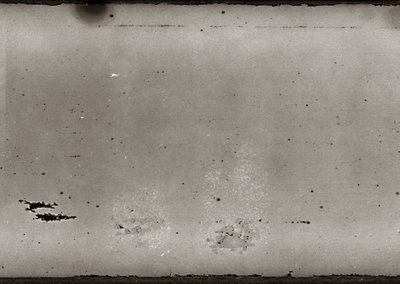I like to experiment with expired film, as evidenced in my previous posts, but sometimes expired film is just...dead. This was a roll of Kodak Plus-X 127 film, expired October 1953, shot through a Brownie Holiday at Zion National Park. I can see very faint images when I hold the film to a light. The edge of a frame, the shadow of a tree...but much too faint for even a scanner to pick up properly. And I've scanned some pretty faded negatives.



So what have a learned from using expired film? Number one: if you are shooting for a day, a few hours, whatever, don't rely on the expired film. I always shoot with multiple cameras, and I make sure I have non-expired film (or at least no older than 10 years). I would hate to make an effort to drive someplace cool, shoot five expired rolls, and find out I got absolutely nothing from of the experience. For me, expired film is kind of like icing on the cake. I go out with an idea of what I want to shoot with my cameras, and I take a roll or two of expired along and just shoot here and there when I think it might be interesting. I rely on my regular film and hope for the best with my expired. Sometimes the icing is nasty and makes your stomach hurt...other times it's the best thing you've ever had and you have some sort of icing orgasm. Or something. Bad analogy, but at least I got to use the word orgasm in my blog. Anyway, toy cameras are often unpredictable, and expired film makes them doubly unpredictable. But that, for me, is also part of the fun. And even the 'non-photos' that result are sometimes beautiful, with a somewhat
minimalist painting quality. I could see one of these at six feet across.
One final tip when using expired film: lots of contrast. The greater the difference between your blacks and whites, the greater the chance of getting a usable image. Sometimes you just get the perfect shots regardless of lighting conditions (at least as far as a toy camera will tolerate), but you want to try to shoot with the worst possible results in mind. You can't hurt good film with contrast, so it's the best way to go about it. Don't let the above images scare you! Photography is about having fun. If you take it too seriously and it becomes work, then it's just work. I like to say the reason they call it work is because someone has to pay you to do it. If you can get payed to take photos, great. But it should still be about adventure and experimention. Anyway, I'll shut up, because I can see your eyes glazing over!
















